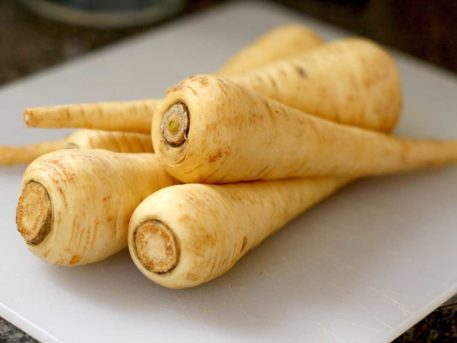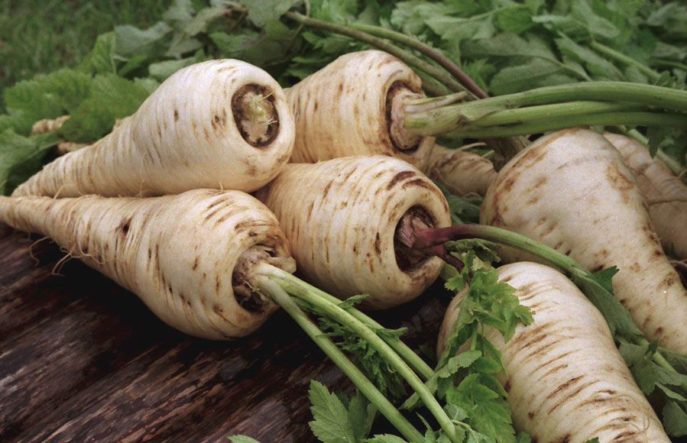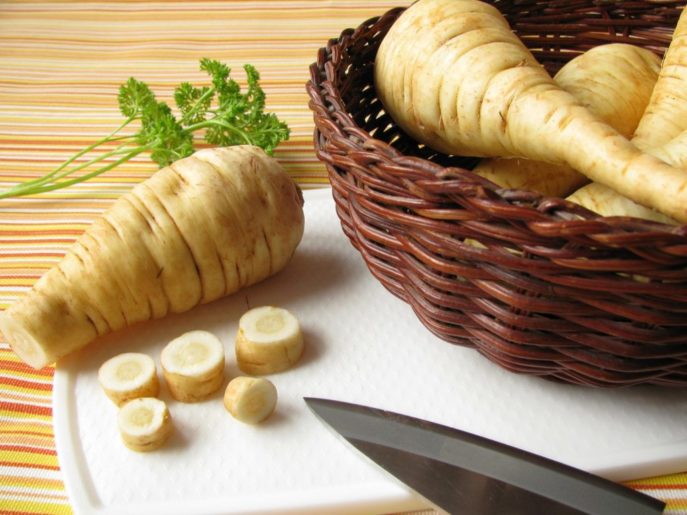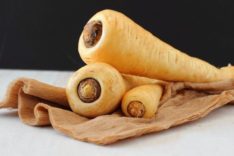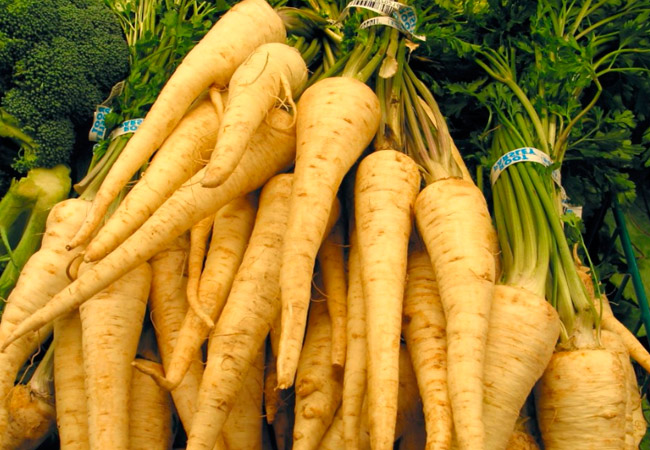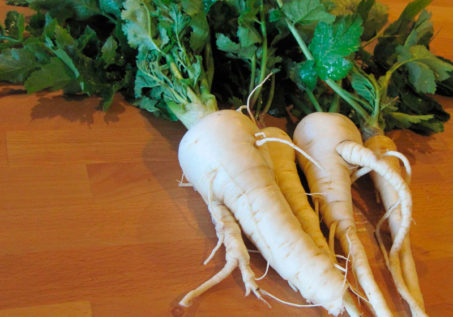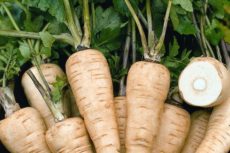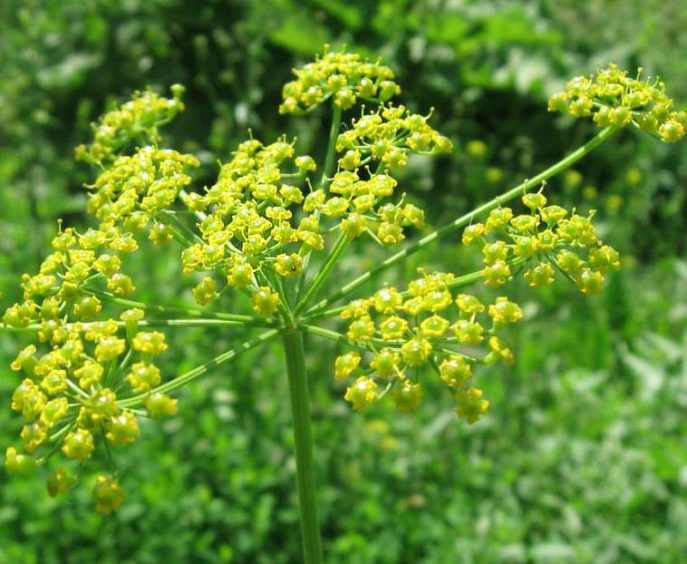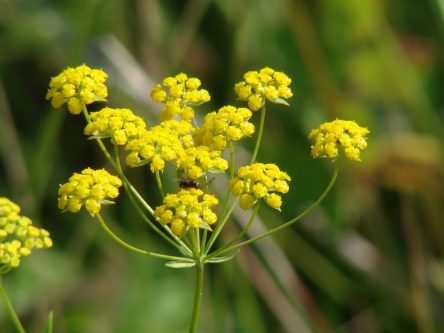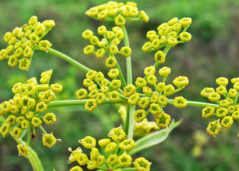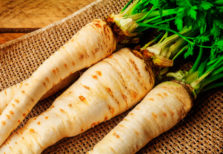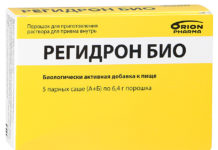Parsnip is a plant that belongs to the family Umbrella. It can be grown in your garden. It contains many useful trace elements, so its addition to food helps to strengthen the immune system and maintain health.
Material Content:
Composition and calorie content
The benefits of parsnip are due to the presence in it of a rich composition of trace elements and vitamins. It contains carbohydrates, starch, B vitamins (B1, B9, B2), ascorbic acid, fiber, pectin, fatty acids, fructose, sucrose.
Parsnip contains zinc, magnesium, phosphorus, potassium. The content of thiamine and carotene in this plant is higher than in carrots.
This is a low-calorie vegetable - in 100 grams of parsnip only 47 calories.
The benefits of parsnip for the body
The plant has a beneficial effect on the digestive tract, as it is characterized by enveloping properties, stimulates peristalsis, and the elimination of toxins from the body. With its use, you can get rid of the occurrence of intestinal colic. The inclusion of parsnip in the diet contributes to the normalization of the nervous system.
There is also an improvement in the state of blood vessels with its regular use.
The plant is used not only in folk, but also in official medicine. It is part of the medicine for vitiligo, angina pectoris, and alopecia.
- Essential oils are present in the plant that stimulate the production of gastric juice and digestive enzymes. This improves the digestion process.
- The use of the plant helps to eliminate inflammation in the gallbladder.
- Low calorie content allows you to use it in the fight against excess weight.
In the recipes of traditional medicine, you can find recommendations for the use of parsnip with a reduced vitality and libido.
Under the influence of the elements contained in the plant, the dissolution of stones occurs. The use of parsnip does not allow secondary absorption of urine, it stimulates the removal of sand from the kidneys.
The plant is characterized by painkillers and diuretics. Raw root and broth are recommended for use in the development of inflammation in the pelvic organs. It is effective for prostatitis, inflammation in the bladder and female genital organs.
With regular use of the plant, the work of the bronchi and lungs improves with tuberculosis and asthma. It also has a good effect on emphysema.
Improving the immune system is due to the presence of vitamin C. Therefore, the plant can be used for prophylactic purposes at the risk of viral and colds.
However, even with an already begun illness, a decoction of the root will help to quickly eliminate the cough.
Plant-based preparations
On the basis of parsnip, such preparations as Pastinacin, Epigaline and Beroxan are produced. As raw materials use plant seeds.
Beroxan is a photosensitizing drug that allows you to:
- to intensify the restoration of skin pigmentation;
- activate hair growth;
- stimulate the production of melanin when exposed to UV;
- restoration of natural skin reactions to the effects of solar radiation;
- to treat vitiligo.
The drug is applied externally, using a 0.25% solution, applying to the skin in a circular motion.
Also, the drug is taken orally in the form of tablets.
Pastinacin is a drug with antispasmodic action.
The medicine has the following effects:
- eliminates spasms, relaxing the muscles of the intestines and coronary vessels;
- sedative effect.
It can be used for neurosis, coronary heart disease, angina pectoris, coronary insufficiency.
Epigaline is used in the treatment of hyperplasia. It is prescribed for the treatment of the prostate gland, pathological proliferation of endometrial cells, ovaries, and mammary glands.
Recipes from traditional medicine
Parsnip juice
The use of plant juice is recommended for a decline in vitality, a decrease in overall tone. Juice strengthens blood vessels, improves appetite and digestion.
The drink is characterized by an expectorant effect, and also relieves pain.
Parsnip juice is used in the treatment of heart and blood vessels, with colic in the liver, kidneys, stomach. Since parsnip removes excess fluid from the body, the drink is used to eliminate edema.
Parsnip juice is mixed with honey and drink a teaspoon before meals.
Decoction of leaves or root
Decoction of the plant is used in the treatment of many diseases.
To get rid of baldness, a decoction is used internally and externally. To get it 2 tbsp. leaves pour a liter of boiling water and keep on fire for a quarter of an hour. After this, the drink should be infused for 3 hours. Ingestion is carried out daily three times a day for a teaspoon. External use involves rubbing the broth into problem areas.
With urolithiasis and kidney stones, take a decoction prepared from 1 tbsp. dry crushed leaves of the plant and 1 liter of filtered water. They are boiled for half an hour, filtered and left to infuse in a thermos for a day. Take the finished product in a tablespoon three times a day.
To eliminate intestinal colic, 2 teaspoons of dried leaves are poured into 500 ml of boiling water and boiled for another 10 minutes. Infuse the drink should be 2-3 hours in a warm place. Take it 30 minutes before meals three times a day, 100 ml.
Decoctions are prepared not only from leaves, but also from the roots of the plant.
Such a medicine effectively helps relieve cough with a cold. For the preparation of cough syrup 2 tbsp. chopped root mixed with 5 tbsp. sugar and a glass of boiling water. The broth should be infused in a thermos for 10 hours. Drink it in 2 tablespoons 5 times a day.
The following recipe is used against baldness: the juice of 2 roots is combined with the juice of 2 carrots, mixed with half a liter of boiled water and boiled for 30 minutes. A decoction is taken three times a day in half a glass half an hour before meals.
With a reduced emotional background, depression, one crushed root vegetable is mixed with 50 g of honey, 5 mint leaves, 5 linden inflorescences. The finished mixture is poured with 2 liters of water, boiled for 30 minutes and insisted day. The finished drink is taken 3 times a day.
Calming Tea
The crushed and dried stems of the plant are mixed with linden and honey, adding a liter of boiling water to the mixture. It is recommended to prepare fresh tea daily, although it can retain its beneficial properties for 3 days.
Infusion
To prepare the infusion, you can use the following recipe. One large root crop is crushed and rammed to begin the release of juice, then pour 500 ml of vodka. Tincture is prepared a month, it should be stored in a dark glass dish in a cool place. Periodically, it must be shaken.
Application in cosmetology
Parsnip is also used in many areas in cosmetology. It is effective as an anti-cellulite agent, it is used against acne and in inflammatory processes on the skin. It is also used as an anti-aging agent, as it is able to remove fine wrinkles.
Due to its antioxidant qualities, parsnip is used to treat skin diseases.
The nourishing and whitening effect of parsnip is especially noticeable when used as a mask. Such a tool can be prepared independently.
The following ingredients will be required:
- plant root - 1;
- vegetable oil - 1 tsp;
- yolk - 1;
- honey - 1 tsp
The root is rubbed on a fine grater and mixed with the rest of the components. Apply the mask for 20 minutes. At the end of the procedure, wash with water.
Mask with mint leaves will help relieve inflammation:
- plant root - 1;
- mint leaves - 5 pcs;
- honey - a tablespoon;
- vegetable oil - 2 tbsp.
The root is rubbed on a fine grater, and the leaves are crushed. It is necessary to crush both components in the container until the juice goes. Then add the remaining components. The mask is applied in circular motions for 10-15 minutes.
Parsnip in cooking
Parsnip in cooking is often used as a seasoning. The aroma of the plant resembles parsley, and it tastes like carrots. It is interesting that it can also be used in the process of preparing confectionery. Tops can be used for salads. However, it is used only fresh.
Contraindications and possible harm
Caution should be observed with regular use of the plant in the summer. This is due to its ability to increase photosensitivity - i.e. sensitivity to ultraviolet radiation. You should also observe precautions in the process of caring for the plant - careless actions can lead to burns.
Contraindications for use include:
- photodermatosis;
- individual intolerance;
- hypotension;
- urolithiasis in advanced form.
There are age restrictions for the use of the product: it is not given to children under 3 years old and the elderly.


